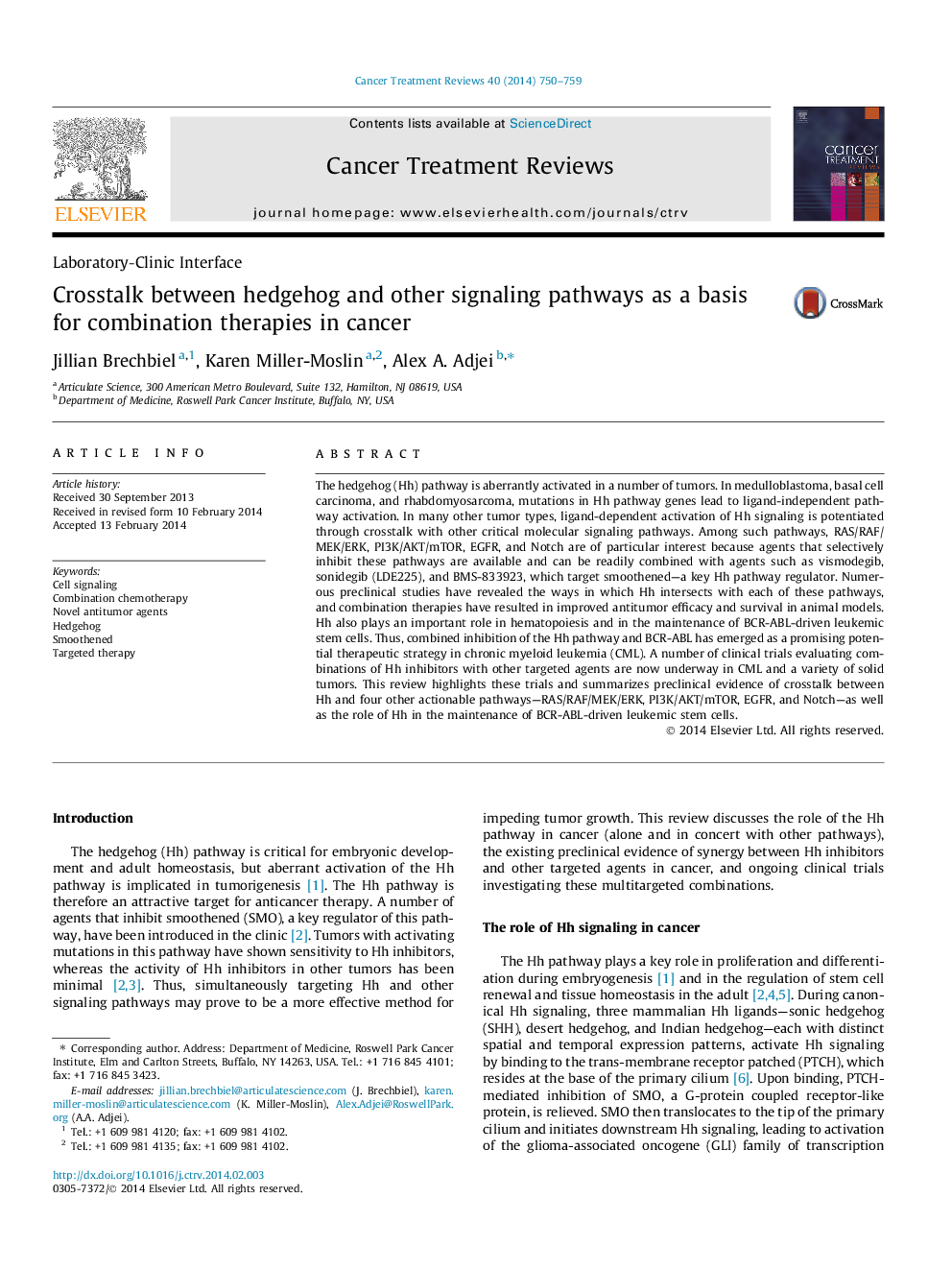| Article ID | Journal | Published Year | Pages | File Type |
|---|---|---|---|---|
| 6190506 | Cancer Treatment Reviews | 2014 | 10 Pages |
The hedgehog (Hh) pathway is aberrantly activated in a number of tumors. In medulloblastoma, basal cell carcinoma, and rhabdomyosarcoma, mutations in Hh pathway genes lead to ligand-independent pathway activation. In many other tumor types, ligand-dependent activation of Hh signaling is potentiated through crosstalk with other critical molecular signaling pathways. Among such pathways, RAS/RAF/MEK/ERK, PI3K/AKT/mTOR, EGFR, and Notch are of particular interest because agents that selectively inhibit these pathways are available and can be readily combined with agents such as vismodegib, sonidegib (LDE225), and BMS-833923, which target smoothened-a key Hh pathway regulator. Numerous preclinical studies have revealed the ways in which Hh intersects with each of these pathways, and combination therapies have resulted in improved antitumor efficacy and survival in animal models. Hh also plays an important role in hematopoiesis and in the maintenance of BCR-ABL-driven leukemic stem cells. Thus, combined inhibition of the Hh pathway and BCR-ABL has emerged as a promising potential therapeutic strategy in chronic myeloid leukemia (CML). A number of clinical trials evaluating combinations of Hh inhibitors with other targeted agents are now underway in CML and a variety of solid tumors. This review highlights these trials and summarizes preclinical evidence of crosstalk between Hh and four other actionable pathways-RAS/RAF/MEK/ERK, PI3K/AKT/mTOR, EGFR, and Notch-as well as the role of Hh in the maintenance of BCR-ABL-driven leukemic stem cells.
